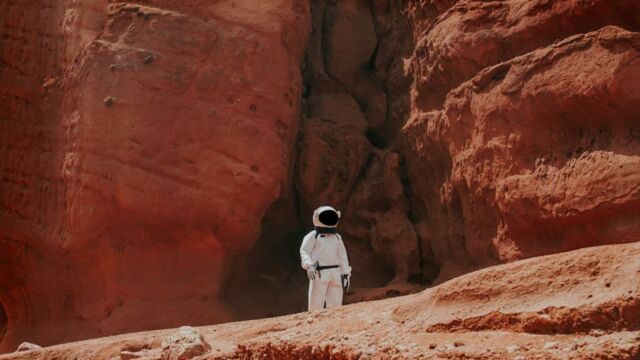The Grand Canyon of Mars is one of the widest canyons in our Solar System. By comparison, it is five times deeper and ten times deeper than that of Arizona. Scientists from the European Space Agency (ESA) have just discovered a large water reserve just below this canyon. They reported this discovery in the journal Icarus.
Discover our latest podcast
An area as big as the Netherlands
Go @ESA_TGO! 👏🛰️
— ESA Science (@esascience) December 15, 2021
The #ExoMars orbiter has peered 1m below #Mars’ dusty surface to find lots of hidden water in the planet’s colossal canyon system, Valles Marineris – an amazing finding in our hunt for #WaterOnMars 💧🔴https://t.co/t2RoBVMfYK@ESA_ExoMars#ExploreFartherpic.twitter.com/HXNMCOha0V
This research, which was carried out using an instrument — the TGO — which measures the level of hydrogen in the upper layers of Mars, revealed an area of the canyon, the size of the Netherlands, containing an unusual amount of hydrogen.
The study's lead author, Igor Mitrofanov, of the Russian Academy of Sciences in Moscow, said:
Assuming that the hydrogen we see is bound to water molecules, it appears that 40% of near-surface material in this region is water.
We can look up to a meter below this layer of dust and see what is really happening below the surface of Mars and, importantly, locate water-rich “oases” that could not be detected with previous instruments.
Read more:
- NASA: Latest mission has found evidence that could prove life on Mars
- 5 things you need to know about on Mars, the red planet
- Blood, sweat and tears of astronauts can be used to make concrete on Mars
A region similar to Siberia
Breaking news: I've spotted hidden #water – either ice or water-rich minerals 🤔 – in #Mars’ Grand Canyon! ❄️💧🔴
— ExoMars orbiter (@ESA_TGO) December 15, 2021
The reservoir is large, not too deep below ground, & could be easily exploitable for future explorers 🤩
Read on: https://t.co/lIAEuz2tNW#ExploreFarther#ExoMarspic.twitter.com/j1jwSCJebq
This large water reserve would be less than a meter from the Martian surface. Part of Valles Marineris, as scientists believe, could be filled with water and thus resemble Earth's permafrost regions—such asSiberia.
In Siberia, water ice persists permanently under the dry ground due to low constant temperatures. In the study, the researchers analysed data recorded from May 2018 to February 2021 by the instrument that maps the hydrogen content of Mars' soil by detecting neutrons.
The study's co-author Alexey Malakhov of the Russian Academy of Sciences said:
Neutrons are produced when highly energetic particles known as 'galactic cosmic rays' strike Mars; drier soils emit more neutrons than wetter soils, and so we can infer how much water is in a ground by looking at the neutrons it emits.















